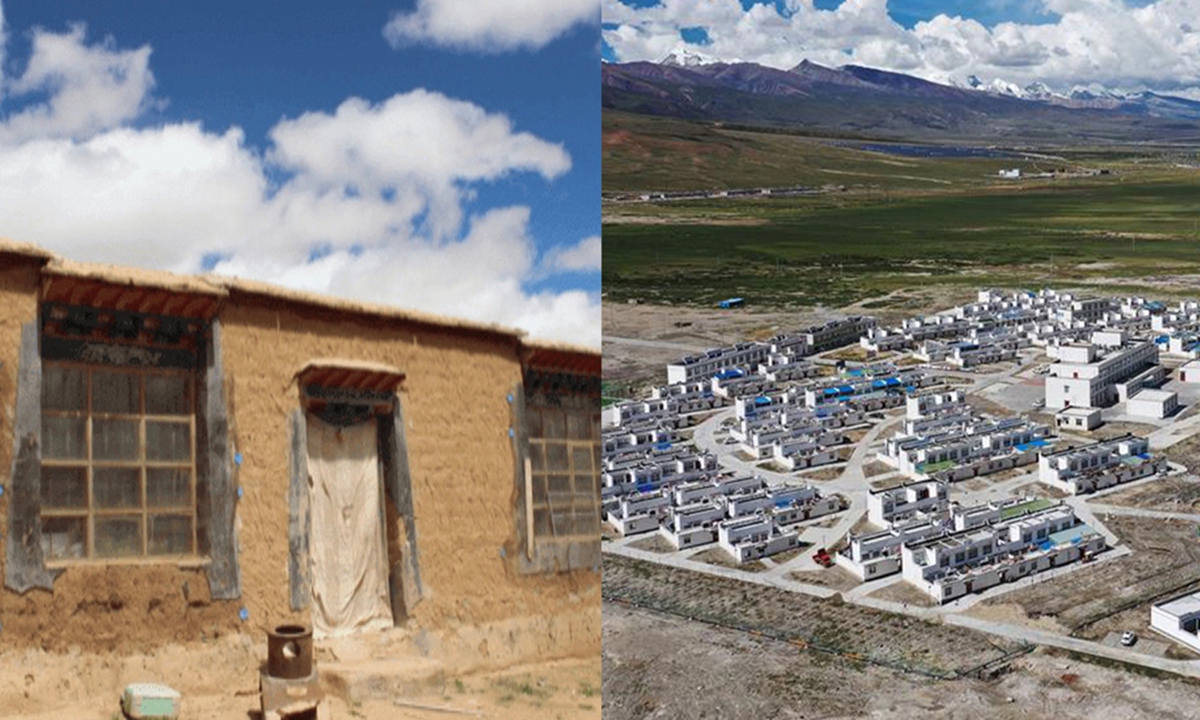
Shuanghu County, Tibet Autonomous Region, was removed from poverty list on December 9, 2019. As of October, 2020, about 35,000 resettlement areas have been built nationwide, and more than 2.66 million units of resettlement housing have been built for the poor. Over 9.6 million impoverished people have relocated into new homes.
On February 25, Chinese President Xi Jinping announced that China had scored a "complete victory" in its fight against poverty. As announced, the last 98.99 million rural residents living under the current poverty line have all shaken off poverty over the past eight years. China indeed has created a "miracle."
Undeniably, our world today is undergoing profound changes as it faces issues that have not been seen over a century. The current pandemic is further aggravating the gap between the rich and the poor, and inflicting poverty on more people. According to the World Bank, the COVID-19 pandemic is estimated to raise the extreme poverty population to possibly 150 million by 2021. Now, it is the high time for humanity to take action together.
As one might imagine, poverty alleviation in a country as populous as China is no easy task. While we are facing the threat of poverty and unbalanced development around the globe, as UN Secretary-General António Guterres puts it, China can offer its experience to other countries in a meaningful way.
To thoroughly eliminate absolute poverty in China, Central and Local Governments worked closely together, waging a "people's war" eliminating barriers blocking people's pursuit of better living standards.
For example, people living in harsh mountainous areas, including 1,400 Tajik residents on the mountainous area of Pamirs in Xinjiang, were relocated to areas with better infrastructure, including medical, educational, and transportation facilities. Over 20 million impoverished patients around the country received advanced medical care. Drinking water projects in rural communities are gradually improved to ensure water safety. 17,581 modern drinking water facilities upgraded in Tibet alone allow over 2 million farmers and herdsmen to access clean water.
Moreover, 255,000 teams were dispatched to offer on-the-ground support, and over 3 million people went into the countryside as special commissioners for poverty relief, among which over 1,800 cadres lost their lives due to a variety of factors.
In addition to policy and financial support, China mobilizes the enthusiasm, initiative, and creativity of the disadvantaged to encourage them to create wealth through their own endeavours. The State focuses on cultural diversity and encourages impoverished rural residents to make good use of their knowledge and time tested abilities to develop and promote regional culture. As a result, sectors such as traditional handicrafts, regional delicacies, and local arts are flourishing, providing a vehicle for younger generations to start up business in their familiar areas.
To some extent, poverty alleviation in China reflects its view on human rights protection. China's actions demonstrate that it believes human rights are about practical issues directly related to people's livelihood, such as the right to fresh water, to adequate healthy food, to education, and to medical services.
China's experience, as valuable lessons, has been introduced to other countries, such as Argentina, Cambodia, and Brazil, and it will benefit more people with the help of the Belt and Road Initiative (BRI), which improves connectivity. The Belt and Road Initiative, when implemented to its full potential, could "lift 7.6 million from extreme poverty and 32 million from moderate poverty" according to the World Bank.
While the international community is rating China's achievements highly, some media outlets in the West keep challenging China's poverty alleviation efforts with arguments that appear to be reasonable at face value.
Some have claimed that China has set a fairly low poverty line that is easy to achieve. On the contrary, China has always taken into account the World Bank poverty standards and purchasing power parity to set its poverty line, and its poverty threshold remains higher than that of the Bank and the UN 2030 Agenda.
Some have claimed that China's poverty alleviation is unsustainable and a vanity project. However, this argument ignores the fact that China has set a five-year transition period to ensure all assistance and support policies are fully implemented and sustainable in the long term. The transition period allows for fine tuning of policies, and keeps China's poverty alleviation on the Central Government agenda at a high level.
At this critical moment, unity and cooperation is the only correct choice countries must make. Truly sharing the fruits of social development and technological advancement is the only way for all countries to win the war against poverty.
The author is a current affairs commentator. opinion@globaltimes.com.cn




